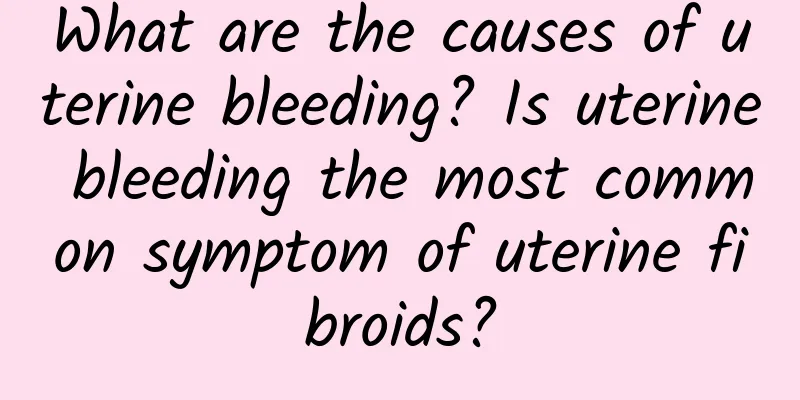Are subserosal uterine fibroids serious? What are the hazards of subserosal uterine fibroids?

|
The symptoms of subserosal uterine fibroids are not very obvious, but the harm to women cannot be ignored. So, are subserosal uterine fibroids serious? Subserosal uterine fibroids refer to most of the fibroids that grow and protrude on the surface of the uterine serosa, accounting for about 20-130% of fibroids. Subserosal uterine fibroids refer to most of the fibroids that grow and protrude on the surface of the uterine serosa, between the subserosal uterine fibroids and the muscle wall. Small fibroids have little effect on women's menstrual changes and are difficult to detect. Some subserosal uterine fibroids do not have obvious symptoms until they grow larger, so it is difficult for many people to discover the disease themselves. The hazards of subserosal uterine fibroids include: 1. Fibroids growing in the lumen of the fallopian tube can stretch and twist the surface of the fallopian tube, squeeze the lumen, affect its patency, or displace the ovary, expand the distance between the ovary and the fallopian tube, and hinder the egg retrieval function of the fallopian tube fimbria. 2. Uterine fibroids can make the frequency, range and duration of uterine contractions higher than the normal baseline, interfering with the implantation of fertilized eggs or causing miscarriage after implantation. When fibroids are accompanied by uterine periosteal proliferation, it means that the ovaries do not ovulate. Fibroids cause uterine bleeding, infection, and blockage of fallopian tubes, which can cause infertility. Larger uterine fibroids deform the uterine cavity, which is not conducive to the passage of sperm, implantation of fertilized eggs and fetal development. 4. Uterine fibroids growing in the cervix can compress the cervical canal, obstruct the passage or change the direction of the cervix, moving it away from the semen pool in the posterior fornix, making it difficult for sperm to enter the cervix. 5. Uterine fibroids growing under the mucosa of the uterine cavity are like placing a spherical intrauterine device in the uterine cavity, which hinders fertility. The ischemia, necrosis and atrophy of the endometrium on the surface of the uterine cavity are also not conducive to the implantation of the fertilized egg. Fibroids that grow near the uterine horns can compress the opening of the fallopian tubes, causing blockage. |
<<: Is it serious to have a small uterine fibroid? How to use medicine for uterine fibroids
>>: What should I do if I have uterine fibroids? Will uterine fibroids recur?
Recommend
What to do if a girl has uterine prolapse
What should girls do if they have uterine prolaps...
What symptoms do women experience during menopause?
Most female friends will easily enter menopause a...
How can I make my menstruation clear?
You can adjust your diet and eat more light boile...
What causes cervicitis?
There are many causes of cervicitis, the most com...
The ban on US beef is lifted conditionally! The Department of Health will study the safe allowable amount
The Executive Yuan issued a press release on the ...
Dysmenorrhea is not reliable with folk prescriptions
White-collar Fan Fang (pseudonym) started having ...
What are the causes of pelvic inflammatory disease?
Pelvic inflammatory disease refers to the symptom...
A week before a road run, you should eat and drink first.
Road running events in Taiwan are held all year r...
Will women lose weight and have irregular menstruation? How to treat irregular menstruation caused by weight loss?
Normal menstruation represents the health of wome...
Is pelvic effusion related to the rectum? What are the risk factors?
Is pelvic effusion related to the rectum? What ar...
The main factors that cause dysmenorrhea
I believe that many female friends should be fami...
Can I eat fermented rice wine eggs during menstruation? It depends on the specific situation of menstruation
Whether you can eat fermented rice wine eggs duri...
How long after a miscarriage can you go out? Let's take a look at it below
Because of many uncertain factors and some intern...
What are the precautions for patients with congenital absence of vagina?
What are the precautions for patients with congen...
Is moxibustion effective for adenomyosis?
Is moxibustion useful for adenomyosis? Moxibustio...









